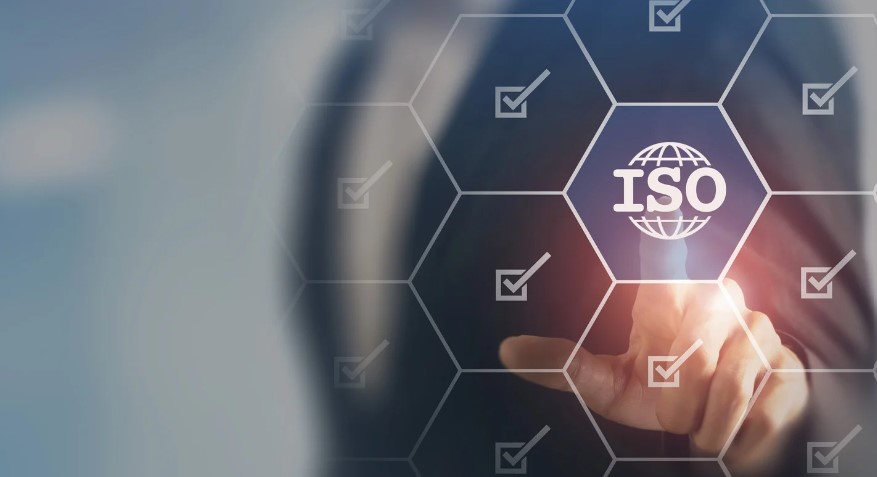
Understanding ISO 27001 Templates: A Comprehensive Guide
Understanding ISO 27001 Templates
In the world of technology we live in now, keeping information safe is very important for every kind of organization, especially knowing that cyberattacks happen once every 39 seconds. Cybersecurity risks are always changing and having strong information security helps to keep customer confidence high and meet regulations.
ISO 27001 is a worldwide accepted standard that gives structure to handling sensitive company data. Templates, as a significant tool in applying ISO 27001 standards, assist in simplifying the process and maintaining uniformity.
This all-inclusive guide will delve into different facets of ISO 27001 templates, helping you understand their importance, how to use them efficiently, and what advantages they bring to your organization.
The Role of ISO 27001 Templates in Risk Assessment

Assessment of risk is an important part of ISO 27001 because it helps organizations recognize, estimate, and lower risks related to their information possessions. The ISO 27001 risk assessment template plays a vital role here by providing a uniform structure to record possible risks and weaknesses, evaluate the probability and consequences of these risks, as well as decide suitable controls for handling them.
Organizations can achieve a uniform and meticulous risk evaluation across various sections and roles by employing a risk assessment template. This not only helps with adherence but also amplifies the entire security status of the organization.
A risk assessment template usually includes parts for recognizing assets, dangers, weaknesses, and controls in place. It offers a structure to examine the influence and probability of every risk, thus assisting organizations in deciding which risks need more attention first. This process of standardization helps remove gaps and irregularities that could be present otherwise. Also, it helps in communicating and understanding between stakeholders so that all people know about risks and actions for handling them.
Key Elements of ISO 27001 Documentation Templates
ISO 27001 documentation templates are made to guide organizations in creating and keeping the needed documentation for conformity. These models embrace different parts of the information security management system (ISMS), like policies, procedures, guidelines as well as records. A few of the main elements generally included in these templates are:
- Information security policy template: This is the starting point of your ISMS. It makes clear the organization’s dedication to information security, offers scope for ISMS, and describes the duties of important participants in it.
- Statement of Applicability (SoA) template: This template makes sure the SoA—a very important document that shows what ISO 27001 controls apply to an organization and gives reasons for including or excluding them—is complete and properly recorded.
- Risk treatment plan template: After the identification and evaluation of risks, this risk treatment plan template helps companies record the actions they will take to lower or manage these risks. It includes assigning roles, establishing deadlines, and monitoring advancement.
- Incident management procedure template: This is a template for the sequence of actions that must be followed when dealing with a security incident. It covers detection, reporting, response, and recovery in an orderly manner to handle incidents consistently.
- Audit checklist template: To keep ISO 27001 compliant, it’s necessary to do regular internal audits. The audit checklist template gives a systematic way of doing these audits so that all needed parts are checked properly.
Benefits of Using ISO 27001 Templates
For organizations that want to set up and keep a good ISMS, using ISO 27001 templates has many advantages. Templates give a uniform method, making sure documentation is consistent and complete. This is very crucial in complicated organizations with many sections and groups handling information security management. Uniformity in formatting lowers the possibility of missing information or mistakes.

Secondly, templates are a time and effort saver. Creating documentation from the beginning can be demanding in terms of time and resources. Templates offer a point to start with, having sections and structures already set up that you can adjust to fit your organization’s unique requirements. It quickens the process of recording, enabling organizations to concentrate on applying security controls and enhancing their overall safety conditions.
Moreover, templates help in adhering to ISO 27001 requirements. The standard has documented requirements and templates assist in ensuring all necessary elements are covered. This helps organizations display their adherence during audits and assessments. Also, templates make sure that organizations are aware of any alterations to the standard. They can easily be changed to include new needs or top guidelines.
Customizing ISO 27001 Templates to Fit Your Organization
Though ISO 27001 templates give a good starting point, it’s important to make them match your organization’s particular requirements and setting. This means modifying the templates to show the structure, processes, and risk level of your organization. By doing so, you make sure that what is documented matches reality instead of having generic documents that do not represent how your business handles its information security matters.
For making ISO 27001 templates personalized, the first step is to carefully look at your organization’s processes and controls. Find any missing parts or areas that need improvement, and then change the templates with this information. Include important participants in this procedure to make sure customized documentation shows the practices of your organization correctly and fulfills their requirements.
Moreover, think about the culture of your organization and how it communicates when altering templates. Employ language and terms that are well-known by workers, and make sure the documentation is simple to comprehend and adhere to. This improves agreement with ISMS rules as employees are inclined to interact more with documents they find applicable and understandable.
Ensuring Ongoing Compliance and Improvement
Putting ISO 27001 into place is not a single action but rather requires continuous dedication and improvement. Frequent checking and revising of the ISMS documents is crucial for keeping up with rules and making sure they stay effective. ISO 27001 templates can help greatly by providing a methodical way of managing documentation.

Review the ISMS documentation regularly to make sure it is current and reflects any alterations in the organization’s methods or risk environment. Use the models as starting points for these revisions, and modify them accordingly by adding new data or enhancements. Moreover, conduct internal audits using an audit checklist template at frequent intervals to find out areas where you can improve as well as to confirm that ISMS functions appropriately.
ISO 27001 is based on the principle of constant improvement, and templates can support this by offering regularity and structure to how documentation and process management are handled. When the documents are reviewed and revised often, it helps organizations guarantee that their ISMS stays useful and strong against changing dangers.
Bottom Line
ISO 27001 templates are very useful for businesses that want to create and keep a good information security management system. They bring standardization to the process of documenting, making sure there is uniformity and total coverage, and following the rules of this standard. Using these models can help organizations make their documentation work easier, save time and energy, and concentrate on setting up strong security measures.
Adapting the templates to match the organization’s requirements helps in making documentation relevant and useful. Regular reviews and changes, supported by these templates, guarantee constant advancement and adherence to ISO 27001. Using ISO 27001 templates is an important part of getting a strong, safe information security stance.
Author Profile
- Blogger by Passion | Contributor to many Business Blogs in the United Kingdom | Fascinated to Write Blogs in Business & Startup Niches |
Latest entries
 BusinessMarch 26, 2025eCommerce Strategies to Reduce Returns You Can Leverage Today
BusinessMarch 26, 2025eCommerce Strategies to Reduce Returns You Can Leverage Today BusinessMarch 11, 2025The Future of Pharmaceutical Packaging
BusinessMarch 11, 2025The Future of Pharmaceutical Packaging BusinessFebruary 28, 2025SaaS Client Onboarding Challenges and How to Tackle Them?
BusinessFebruary 28, 2025SaaS Client Onboarding Challenges and How to Tackle Them? BusinessFebruary 28, 2025Interim Finance Managers: Why Hiring Them for your Business?
BusinessFebruary 28, 2025Interim Finance Managers: Why Hiring Them for your Business?

